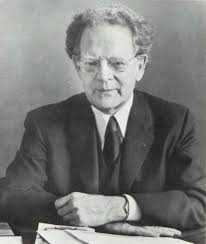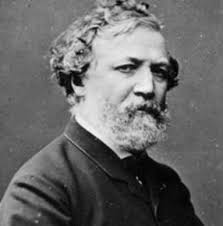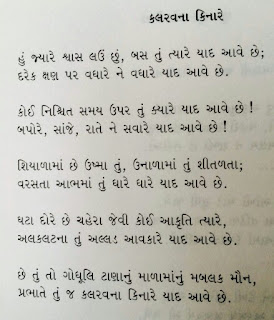To Evaluate My Assignment CLICK HERE


Name :-
Jagruti R. Vasani
Sem :- 2
Roll No.
:-14
Paper :-8
Cultural Studies
Subject :-
Method and Methodology in C.S.
Submitted To
:- Smt. S.B. Gardi Department of English
Maharajakrishnakumarsinhji University Bhavnagar
INTRODUCTION :
There has
long been a reluctance to bring any explicit discussion of methods and
methodology into cultural studies. This can be explained in various ways. We
can see it first of all as connected with the field’s renegade character, and
its conscious dissociation from established academic disciplines. Developing
and adhering to a particular set of methods was considered to be characteristic
of those disciplines and somehow compromised by an unexamined notion of empirical enquiry. Cultural
studies has preferred to borrow techniques and methods from established
disciplines without subscribing to any disciplinary credentials itself.
METHODOLOGY
The methodology is the general research
strategy that outlines the way in which research is to be undertaken and, among
other things, identifies the methods to be used in it. These methods, described
in the methodology, define the means or modes of data collection or, sometimes,
how a specific result is to be calculated.[4] Methodology does not define
specific methods, even though much attention is given to the nature and kinds
of processes to be followed in a particular procedure or to attain an
objective.
When proper
to a study of methodology, such processes constitute a constructive generic
framework, and may therefore be broken down into sub-processes, combined, or
their sequence changed.[5]
A paradigm
is similar to a methodology in that it is also a constructive framework. In
theoretical work, the development of paradigms satisfies most or all of the
criteria for methodology.[6] An algorithm, like a paradigm, is also a type of
constructive framework, meaning that the construction is a logical, rather than
a physical, array of connected elements.
Any
description of a means of calculation of a specific result is always a
description of a method and never a description of a methodology. It is thus
important to avoid using methodology as a synonym for method or body of
methods. Doing this shifts it away from its true epistemological meaning and
reduces it to being the procedure itself, or the set of tools, or the
instruments that should have been its outcome. A methodology is the design
process for carrying out research or the development of a procedure and is not
in itself an instrument, or method, or procedure for doing thi his article is about research
methods. For software engineering frameworks, see Software development
methodology.
Methodology
is the systematic, theoretical analysis of the methods applied to a field of
study. It comprises the theoretical analysis of the body of methods and
principles associated with a branch of knowledge. Typically, it encompasses
concepts such as paradigm, theoretical model, phases and quantitative or
qualitative techniques.
A
methodology does not set out to provide solutions - it is therefore, not the
same as a method. Instead, a methodology offers the theoretical underpinning
for understanding which method, set of methods, or [best practice]s can be
applied to a specific case, for example, to calculate a specific result.
It has been
defined also as follows:
"the
analysis of the principles of methods, rules, and postulates employed by a
discipline”.
"the
systematic study of methods that are, can be, or have been applied within a
discipline".
"the
study or description of methods".
Methodology
and method are not interchangeable. In recent years, however, there has been a
tendency to use methodology as a "pretentious substitute for the word
method".Using methodology as a synonym for method or set of methods leads
to confusion and misinterpretation.
Examples of
when to use “method” and “methodology”
If you work
in industry, it’s likely that you will mostly be talking about methods. Here
are some ways you can use “methods” in context:
I’m trying
to decide between doing a contextual inquiry, or bringing in participants for
interviews. Which method would you choose?
We want to
have hard data to answer this question, so we should choose a quantitative
method.
If you are
working in academia and writing research papers, you want to consider including a description of
your methodology.
Ethnography
was chosen for this study as a methodology because of X, Y and Z reasons.
In order to
create a product that fits a true customer need and design an experience that
they love, we used a participatory approach to our design research process.
In short Ask
yourself whether you are describing how you will collect your data (method), or
if it’s the broader strategy for your research approach (methodology). For the
industry practitioner, you typically will be talking about methods. For the
academic, you may be talking both about the framing methodology and methods
used to accomplish your research goals.
Description in Method
Question of
Method in Cultural Studies brings together a group of scholars from across the
social sciences and humanities to consider one of the most vexing issues
confronting the proverbial 'anti-discipline' of cultural studies.
Covers such
topics as the media, feminism, and politics.
Identifies
what methods have prevailed in the interdisciplinary pursuit of cultural
studies.
Examines the
relationship between cultural studies and traditional disciplines, the politics
of knowledge, and spatial.
temporal
models.
Probes the
possibility of method in explicit terms for scholars and students in media,
communications, sociology and allied fields.
KEY METHODS
Following
the Cultural Studies pioneer Raymond Williams’ initiative, and its more recent
reformulations, the course explores key concepts and themes that have, for
decades now, been shaping the diverse methodologies operating within and/or
influencing the discourses of Cultural Studies in general and American Studies
in particular. The lecture aims at tracing and exploring the problems and
issues crucial and of ongoing interest in such research perspectives informing
the field of Cultural Studies as discourse analysis and psychoanalysis,
deconstruction, critical race studies, ethnic studies, gender, queer and
sexuality studies, and postcolonial studies. In order to familiarize the students
with these often divergent approaches to the study of the workings, mechanisms
and traces of culture, the lecture clarifies, while respecting the problematic
character of, such key critical concepts as sign, myth, ideology, deconstruction,
new historicism, modernity, metafiction, subjectivity, identity, gender,
queerness, race, postcolonial studies and orientalism. Based on readings in
influential theoretical texts, the lecture not only discusses the notions,
postulates and problems important in a given methodological approach, but also
illustrates their current and possible uses in the study of American culture,
also by means of referring to its diverse discursive, ideological, social and
political dimensions that the lecture contextualizes through a recourse to the
examples of persons, events, tendencies and problems of importance and
influence in American culture and history.
The methodology is the general research
strategy that outlines the way in which research is to be undertaken and, among
other things, identifies the methods to be used in it. These methods, described
in the methodology, define the means or modes of data collection or, sometimes,
how a specific result is to be calculated.
A method in
object-oriented programming (OOP) is a procedure associated with a message and
an object. An object is mostly made up of data and behavior, which form the
interface that an object presents to the outside world. Data is represented as
properties of the object and behavior as methods. For example, a Window .
In
object-oriented programming, a procedure that is executed when an object
receives a message. A method is really the same as a procedure, function , or
routine in procedural programming languages. The only difference is that in
object-oriented programming, a method is always associated with a class.
A method, in
the context of object-oriented programming, is a procedure or function
associated with a class. As part of a class, a method defines a particular
behavior of a class instance. A class can have more than one method. The idea of methods appears in all
object-oriented programming languages. Methods are similar to functions or
procedures in other programming languages such as C, SQL and Delphi. An object
method can only have access to the data known by that object. This maintains
the integrity of data between sets of objects in a program. A method can be
reused in many objects. As a simple example, let's say that a module has a
VideoClip object that handles functions related to movie clips. The VideoClip
object would probably have some of the following methods:
Play: Begin
playing the movie clip.
Pause: Pause
the movie clip.
Stop: Stop
playing the movie clip.
methods and
design should be thought of as a reciprocal process extending well into your
study. For example, it may arise over the course of your study that there is a
flaw in the design. Changing the design of the study may lead to the choice (or
addition) of a different method which, in turn, may lead to subsequent changes
in the design to accommodate the new methods.
here’s another of mine: the regular misuse of
the word “methodology” in academic papers. Methodology is the study of
scientific methods, a branch of epistemology. Econometric techniques,
strategies for gathering data, means of testing hypotheses, etc. are methods,
not methodologies. Yet how many empirical papers include a section titled
“Methodology” or “Data and Methodology”? It makes me cringe. “We use an
instrumental-variables methodology,” or “our methodology employs case studies
and structured interviews.” No, those are your methods. Unless you’re citing
Popper or Kuhn or Lakatos or Feyerabend or Blaug or Mäki you probably don’t
have a methodology section.
In recent years . . . “methodology” has been
increasingly used as a pretentious substitute for “method” in scientific and
technical contexts, as in “The oil company has not yet decided on a methodology
for restoring the beaches.” This usage may have been fostered in part by the
tendency to use the adjective “methodological” to mean “pertaining to methods,”
inasmuch as the regularly formed adjective “methodical” has been preempted to
mean “orderly, systematic.” But the misuse of methodology obscures an important
conceptual distinction between the tools of scientific investigation (properly
“methods”) and the principles that determine how such tools are deployed and
interpreted — a distinction that the scientific and scholarly communities, if
not the wider public, should be expected to maintain.
That’s the
description about the method and methodology in cultural studies.
# Thank You #











